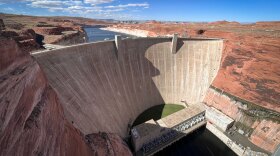-
Around half of Utah’s counties have met their 2030 conservation goals. Taking a closer look at who is succeeding and struggling offers a glimpse of why it’s hard to save water in Utah.
-
Utah and the 6 states that share the river missed a federal Nov. 11 deadline to make progress on a new water agreement. Gov. Katie Hobbs said she has a hard time believing the Upper Basin states can't reduce water use.
-
During droughts and disasters, the Washington County Water Conservancy District’s draft plan could cut up to 60% of the water cities get and leave it up to city leaders to figure out how to get by with less.
-
A group of nonprofits is calling for reductions to water demand, changes at Glen Canyon Dam and more transparent negotiations.
-
Utah’s reservoirs are at 67% capacity, but some people are tuning out the message to save water.
-
The lawn rebate program in St. George, Utah, has replaced enough irrigated grass to save 125 million gallons of water each year.
-
Back in February, Amy Haas, executive director of the Colorado River Authority of Utah, said it would be "folly" for the seven Colorado River states to take their negotiations to court.
-
The Church of Jesus Christ of Latter-day Saints says it is now saving 8 million gallons of water a year at Temple Square.
-
Top water negotiators declined to speak at an upcoming conference amid closed-door meetings about the future of the water supply for 40 million people.
-
The authors of a new memo say the seven states negotiating over a new Colorado River deal need to take shared water cutbacks to manage the river going forward.
-
The Colorado River Authority of Utah board approved the first round of applicants for the state’s pilot program. It includes more than a dozen projects along Colorado River tributaries in eastern and southeastern Utah.
-
President Donald Trump froze billions of dollars from the Inflation Reduction Act that was designed to protect water supplies for cities, farms and tribes.
Play Live Radio
Next Up:
0:00
0:00
Available On Air Stations












